thank you for taking your time to answer my question.
I really can't find a good example on how to use raycaster in three JS in the version r74.
It seems to be a lot of changes between the versions r55 and r76... and many forums are talking and putting examples of minor versions of three..
can anyone give us an example of how to do it?
Im using angular and bootstrap by the way
this is what i've try:
My View
<div class="col-md-11">
<div class="container">
<div class="panel panel-default">
<div class="panel-heading">
<h3 class="panel-title">Title</h3>
</div>
<div class="panel-body" style="padding: 0px">
<div class="canvas-zonas" ng-click="zonas.click($event)">
</div>
</div>
</div>
</div>
</div>
My Css (using stylus)
.canvas-zonas
height 67vh
My Controller
var = mouse = new THREE.Vector3();
var = raycaster = new THREE.Raycaster();
var = canvas = document.querySelector(".canvas-zonas");
function clickObject(event) {
event.preventDefault();
mouse.x= ((event.clientX - canvas.offsetLeft)/canvas.clientWidth) * 2 - 1;
mouse.y=-((event.clientY - canvas.offsetTop)/canvas.clientHeight) * 2 + 1;
mouse.z = 0.5;
raycaster.setFromCamera( mouse, camera );
var intersects = vm.raycaster.intersectObjects(scene.children);
console.info(intersects);
}
So when I click my canvass and print the Intersects variable, sometimes I get [] an empty array even if a click the object and sometimes I get [object] even if I click outside the object.
I would like to show you guys a little bit of my camera config:
My camera
var camera = new THREE.PerspectiveCamera(30, canvas.clientWidth / canvas.clientHeight, 0.10, 1000)
camera.position.y = 20;
camera.position.z = 50;
camera.lookAt(scene.position);
camera.updateProjectionMatrix();
That's my camera config, and also, have in mind that I use a WEBGL as renderer
var renderer = new THREE.WebGLRenderer({antialias: true});
Also, have in mind that I have a resize event going on:
function listenResize() {
window.bind('resize', function () {
canvas = document.querySelector(".canvas-zonas");
renderer.setSize(canvas.clientWidth, canvas.clientHeight);
camera.aspect = (canvas.clientWidth / canvas.clientHeight);
camera.updateProjectionMatrix();
});
}
And finally, I'll post an image of what's going on:
Image 1
thank you very much and excuse my last post. i've updated it!!!

